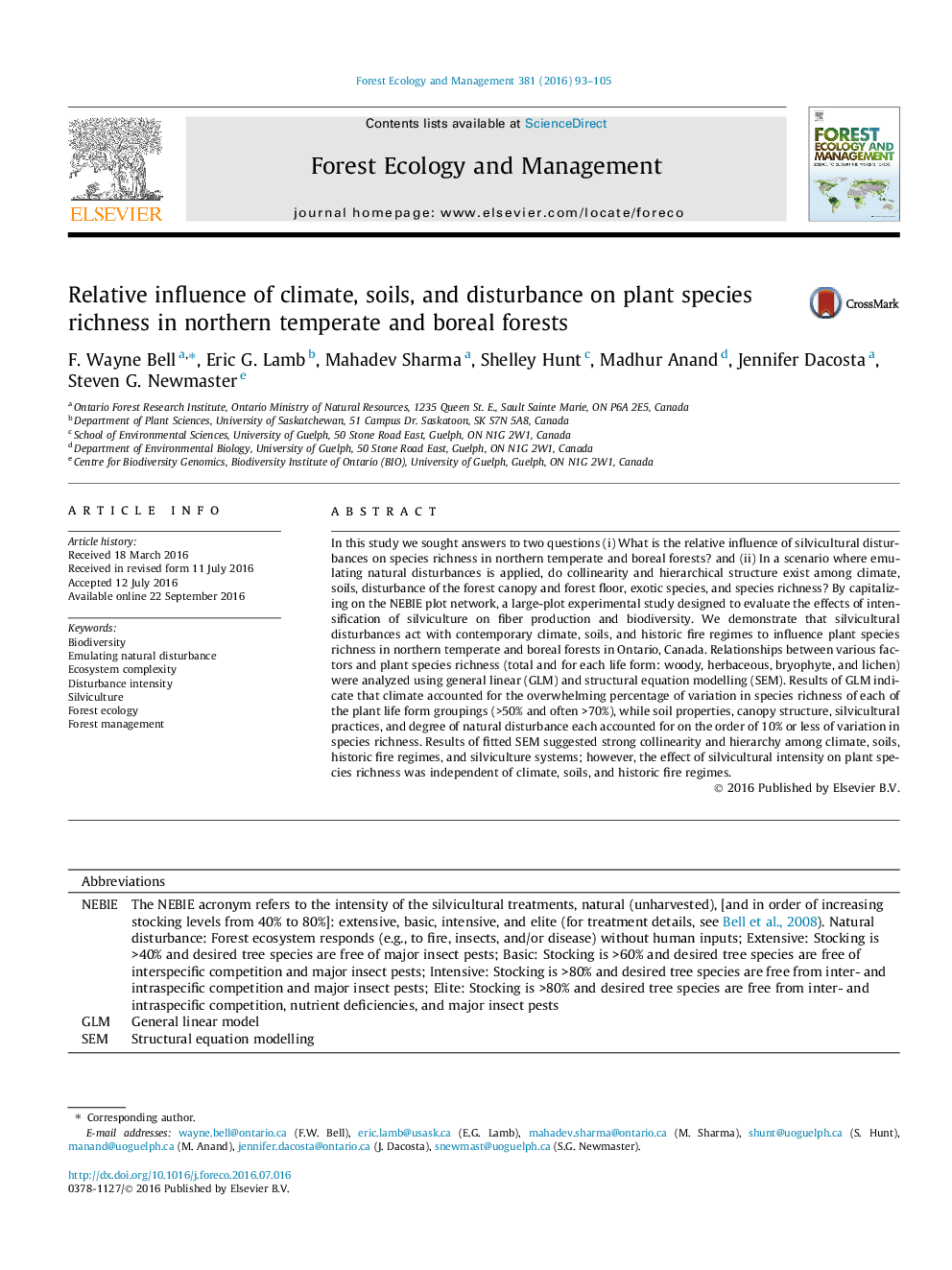| کد مقاله | کد نشریه | سال انتشار | مقاله انگلیسی | نسخه تمام متن |
|---|---|---|---|---|
| 6459545 | 1421377 | 2016 | 13 صفحه PDF | دانلود رایگان |
- Plant richness is influenced by climate, fire regimes, soils, silviculture, and forest structure.
- Silviculture system is hierarchically influenced by climate, soil, and fire regime.
- Silviculture intensity is independent of climate, soil, and fire regime.
- Silviculture system and intensity interact to influence structure and richness.
In this study we sought answers to two questions (i) What is the relative influence of silvicultural disturbances on species richness in northern temperate and boreal forests? and (ii) In a scenario where emulating natural disturbances is applied, do collinearity and hierarchical structure exist among climate, soils, disturbance of the forest canopy and forest floor, exotic species, and species richness? By capitalizing on the NEBIE plot network, a large-plot experimental study designed to evaluate the effects of intensification of silviculture on fiber production and biodiversity. We demonstrate that silvicultural disturbances act with contemporary climate, soils, and historic fire regimes to influence plant species richness in northern temperate and boreal forests in Ontario, Canada. Relationships between various factors and plant species richness (total and for each life form: woody, herbaceous, bryophyte, and lichen) were analyzed using general linear (GLM) and structural equation modelling (SEM). Results of GLM indicate that climate accounted for the overwhelming percentage of variation in species richness of each of the plant life form groupings (>50% and often >70%), while soil properties, canopy structure, silvicultural practices, and degree of natural disturbance each accounted for on the order of 10% or less of variation in species richness. Results of fitted SEM suggested strong collinearity and hierarchy among climate, soils, historic fire regimes, and silviculture systems; however, the effect of silvicultural intensity on plant species richness was independent of climate, soils, and historic fire regimes.
Journal: Forest Ecology and Management - Volume 381, 1 December 2016, Pages 93-105
